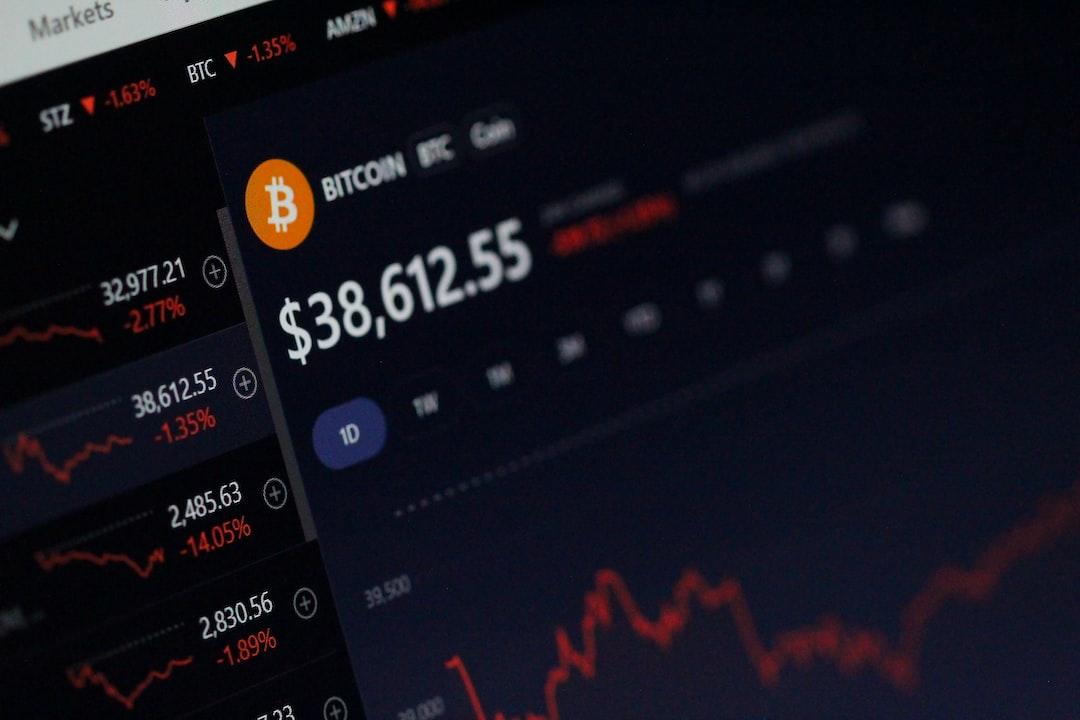GSR Makes $100 Million Private Equity Investment in Upexi’s Solana Financial Strategy
Renowned cryptocurrency trading and investment firm GSR has made a private equity investment of up to $100 million in Upexi, a Nasdaq-listed consumer goods company, betting on its upcoming transformation towards a Solana financial strategy.
(Background: Meanwhile, “Bitcoin Insurance” has secured $40 million in financing; what are its features? Anti-inflation, supported by Sam Altman)
Following the trend of Bitcoin investment and accumulation financial strategies, Solana’s approach has garnered several imitators, including Canadian listed company Sol Strategies Inc. and U.S. Nasdaq-listed company Janover. Consumer goods company Upexi has become the latest traditional company adopting a similar strategy.
On April 21, GSR announced that it had made a private equity investment (PIPE) of up to $100 million in Upexi, Inc. (stock code: UPXI), betting on its soon-to-be-complete transformation towards a Solana financial strategy. Following the announcement, Upexi’s stock price surged more than sixfold during the day.
Back in February, Upexi released a roadmap centered around cryptocurrency. The consumer goods development, manufacturing, and distribution company showed a significant decline in revenue in its latest financial report, with net losses continuing. Embracing cryptocurrency has become a transformative strategy.
GSR Bets on Upexi’s Solana Financial Strategy with $100 Million Private Equity Investment
GSR provided direct financial support for Upexi’s new on-chain strategy. Upexi announced that it had signed a securities purchase agreement with some investors to issue 43,859,649 shares of common stock at a price of $2.28 per share (or prepaid warrants as an alternative), raising a total of approximately $100 million (before deducting placement agent fees and other issuance expenses).
Upexi plans to allocate approximately $5.3 million for working capital and debt repayment, while the remaining funds will be used to build the company’s Solana-based financial system and accumulate Solana assets.
In addition to GSR’s lead investment, various institutions and individuals from the crypto space participated in this round of financing, including Big Brain, Anagram, Delphi Ventures, White Star Capital, Maelstrom (Arthur Hayes’ family office), Hivemind, Borderless, Morgan Creek, Elune Capital, Delta Blockchain Fund, among others. Additionally, several renowned angel investors joined, including Austin Federa, Frank Chaparro, Joey Krug, Bartosz Lipinski, Larry Wu, and Jordan Prince, along with Upexi’s CEO Allan Marshall.
Lily Liu, president of the Solana Foundation, also stated that this transaction marks another step in connecting traditional financial institutions with decentralized infrastructure.
After the announcement, Upexi’s stock price soared by 639.20%, reaching $16.78. As of the close of U.S. markets on April 21, Upexi’s stock price had fallen back to $9.89.

While this news has attracted widespread attention from the crypto market, some industry insiders have expressed their positive views. Arif Kazi, head of business development at Sonic SVM, stated on the X platform, “The public market’s perception of on-chain yield has shifted. Upexi is not hedging risk—they view SOL staking as infrastructure. Native staking is becoming an institutional-grade financial tool.”
He noted that this could be the largest native financial allocation of Solana by a U.S. listed company. The pricing is above market value, with no token, lock-up, or convertible bond clauses. The architecture of Solana makes all of this possible: achieving parallel execution through Sealevel technology, sub-second finality, and a stable validator network layer. This is infrastructure built for institutions. When financial strategies combine with DeFi primitives, it is not only a match but an acceleration. Solana now offers a playbook for capital allocators.
From Gummies to Cryptocurrency: Upexi’s On-Chain Transformation

Upexi, headquartered in Tampa, Florida, has primarily focused on the research, development, manufacturing, and distribution of consumer goods, with brands including medicinal mushroom products Cure Mushrooms, pet care brand LuckyTail, and the Prax series centered on energy gummies. Although this traditional consumer goods model has helped it establish a foothold in the market, it has not gained significant attention in the capital markets, with a market capitalization of only $3 million as of April 18 (local time last Friday).
Upexi, Inc.’s latest financial report reveals significant financial challenges. Within the six months ending December 31, 2024, the company experienced a decline in revenue, with net losses continuing. Revenue for the reporting period was $8.36 million, a substantial decrease from $15.74 million in the same period last year. The company’s net loss was $2.93 million, slightly better than the $3.79 million loss from the previous year.
Due to such financial pressures, cryptocurrency is seen by Upexi as a new opportunity. In fact, Upexi’s crypto strategy began to unfold several months ago. On March 3, Upexi announced that its subsidiary Quantum Hash had signed a Letter of Intent (LOI) to acquire a 2-megawatt crypto mining facility, which is currently operating at less than half capacity. Quantum Hash plans to upgrade existing devices and introduce the latest, fastest mining machines to maximize hash power and monthly Bitcoin output after the transaction is completed.
On February 6, Upexi announced that it was actively seeking further investment opportunities to expand its portfolio through direct investments in cryptocurrency, mining operations, and mergers and acquisitions in the fintech sector. The company updated shareholders on its current business operations and disclosed its long-term crypto and mining strategic plans.
Upexi’s CEO, Allan Marshall, 55, joined the company as CEO in May 2019 after retiring and having been a serial entrepreneur focusing on the tech industry in recent years. His career began in the transportation and logistics sector. He stated, “The company is in a series of rapidly developing opportunities and will continue to push forward with various strategies in the coming weeks and months.”
According to the official website, after the transformation, Upexi will have the following development strategies: first, a financial strategy that includes a diversified digital financial strategy covering various altcoin asset portfolios; second, strategic direction through mining, node operations, staking, streaming services, and HaaS (Hashpower as a Service) to enhance financial returns. In terms of growth path, it aims to achieve business expansion through strategic use of lending, liquidity provision, mining, streaming services, and capital markets.
Currently, Upexi has announced its strategic roadmap for 2025, including:
- Bitcoin and altcoin mining: Within 90 days, possess at least 1-3 megawatts (MW) of low-cost mining operations; complete due diligence on current 2-5 megawatt ongoing mining projects; aim to develop to 10-20 megawatts of mining facilities; expand mining operations to other altcoins such as Ethereum and AI-driven blockchain assets.
- Building a crypto asset investment portfolio: Construct a diversified digital asset investment portfolio, including Bitcoin, Ethereum, Solana, Render, Chainlink; strategically buy during market volatility; hold other assets with blockchain infrastructure growth potential and AI integration value.
- Focus on blockchain-based finance opportunities: Explore opportunities in staking, decentralized lending (DeFi Lending), and blockchain projects with yield-generating models.
- Long-term focus areas include: Web3, decentralized finance (DeFi), AI-driven blockchain growth.
The Sol strategy aims to achieve organic growth, with market volatility potentially leading to a “paper loss dilemma.”
In GSR’s investment in Upexi, more specific details regarding the Solana financial strategy were not disclosed. However, the approach pioneered by SOL Strategies may serve as a template for Upexi, as CEO Leah Wald recently compared the company’s strategy to Solana’s Microstrategy, stating that it is not a fully comprehensive analogy. Leah Wald said, “In my view, the limitation of this model is that it merely plays the ‘Net Asset Value (NAV) game’ by accumulating assets to enhance company value, but that alone is insufficient. Our strategy is to achieve growth through a slower but steadier approach. Initially, we relied mainly on external acquisitions (inorganic growth) to expand our suite of businesses, such as acquiring validators and related assets. Over time, we will gradually shift to rely on natural growth through our own capabilities (organic growth).”
She stated that the ultimate goal of SOL Strategies is to become an infrastructure company for Solana. “In this process, we are indeed accumulating SOL as much as possible and staking it to our validator nodes. But this is just one part of the overall strategy; we are not merely ‘buying SOL’ but playing a practical role in the Solana infrastructure ecosystem.”
It is noteworthy that as more publicly traded companies actively implement cryptocurrency asset reserve plans, this strategy is becoming a new trend in corporate asset allocation. However, as multiple factors such as fluctuations in the global economic environment, panic caused by policy uncertainty, and concentrated profit-taking emerge, the crypto market has experienced violent volatility, and many listed companies may also face paper loss dilemmas.
Overall, Upexi, which is struggling to find breakthroughs in the traditional consumer goods market, is initiating a radical transformation from “gummies to cryptocurrency.” The $100 million funding not only provides strong support for its Solana financial strategy but also opens up broader possibilities for its mining, crypto asset portfolio, and blockchain finance layout. With the backing of mainstream institutions like GSR, Upexi may serve as a reference template for more publicly traded companies venturing into on-chain finance.
However, this transformation journey remains fraught with uncertainty. From sharp fluctuations in stock prices to sustained losses in its core consumer goods business, along with the high risks and policy challenges inherent in the crypto market, whether Upexi can carve out a truly sustainable growth path from its “crypto experiment” remains to be seen.



